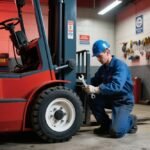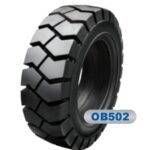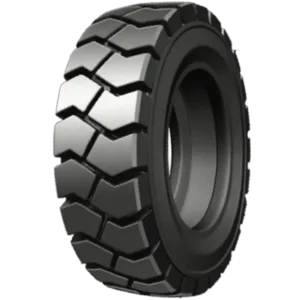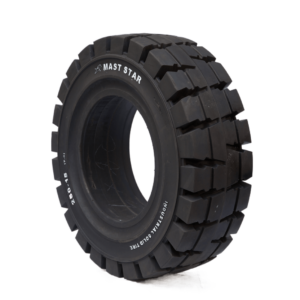Hey there, forklift warriors! Let’s talk about a problem that’s been giving operators and mechanics alike a serious headache—solid tire “sidewall collapse” (or as I like to call it, the “tire meltdown”). Imagine your tire suddenly deciding to go flat… except it’s not flat, it’s just permanently sad. One minute you’re cruising smoothly, the next, your forklift feels like it’s riding on a square wheel.
As a mechanic who’s wrestled with more forklift tires than I can count, today I’ll break down why this happens, the dangers it brings, how to prevent it, and—if disaster strikes—how to fix it without losing your sanity.

1. What the Heck is “Sidewall Collapse”? (And Why Does My Tire Look Like a Pancake?)
Sidewall collapse happens when the solid tire’s sidewalls get crushed and deformed, usually from excessive side-loading. Unlike air-filled tires that bounce back, solid tires remember the abuse—and they hold a grudge.
Why Does This Happen?
✔ Sharp, Frequent Turns – Forklifts aren’t race cars (though some operators try). Tight, fast turns put massive sideways pressure on the tire.
✔ Overloading – Just because your forklift can carry 5,000 lbs doesn’t mean the tires are thrilled about it.
✔ Poor-Quality Tires – Cheap rubber = faster “meltdown.” You get what you pay for.
✔ Uneven Surfaces – Gravel, potholes, and debris love to bully your tires into submission.
2. The Dangers: Why You Should Care (Before Your Forklift Starts Dancing)
Ignoring a collapsed sidewall is like ignoring a “Check Engine” light—it only gets worse. Here’s what can go wrong:
🚜 Vibrations That Shake Your Soul – Your forklift will ride like a shopping cart with a broken wheel.
⚠ Premature Wear & Tear – Other parts (bearings, axles) start suffering because the tire isn’t absorbing shocks properly.
💥 Sudden Blowouts (Yes, Even on Solid Tires!) – Extreme cases can cause chunks of rubber to break off.
🛑 Safety Hazard – Unstable loads, tipping risks, and operator discomfort. OSHA won’t be happy.
3. Prevention: How to Keep Your Tires Happy (And Avoid the “Meltdown”)
🔧 Maintenance Tips from a Grumpy Old Mechanic
✅ Avoid “Tokyo Drift” Maneuvers – Smooth, wide turns = happy tires.
✅ Don’t Overload – Just because the forklift can lift it doesn’t mean it should.
✅ Inspect Regularly – Look for early signs of sidewall bulging or uneven wear.
✅ Upgrade to Reinforced Tires – Some solid tires have steel bands inside to resist collapse.
✅ Keep Floors Clean – Debris and rough surfaces accelerate wear.
4. Fixing a Collapsed Tire: Can It Be Saved?
If your tire already looks like a squashed donut, here’s what to do:
🛠️ Temporary Fix (For Desperate Times)
- Rotate the Tire – Sometimes flipping it can buy you a little more time.
- Reduce Load & Speed – Baby it until you can replace it.
🔨 Permanent Solution
- Replace the Tire – Once collapsed, it won’t magically recover.
- Check the Wheel Rim – A bent rim can cause repeat failures.
- Consider a Different Tire Type – If sidewall collapse keeps happening, maybe polyurethane tires or pneumatic alternatives are worth a look.
Final Thought: A Tire’s Life is Hard—Treat It Right!
Solid tires are tough, but they’re not invincible. Treat them right, and they’ll last. Abuse them, and they’ll make your life miserable.
So next time you see a forklift operator taking corners like Vin Diesel, remind them: “Easy there, Speed Racer—your tires have feelings too!”
Got a tire horror story? Drop it in the comments—let’s share the pain (and the laughs). 🚜💥
🔧 Pro Tip: Bookmark this guide for the next time your forklift starts wobbling like a drunk penguin. Your future self will thank you.
Hope this helps, fellow wrench-turners! Stay safe, and may your tires stay round. 🛠️😆






